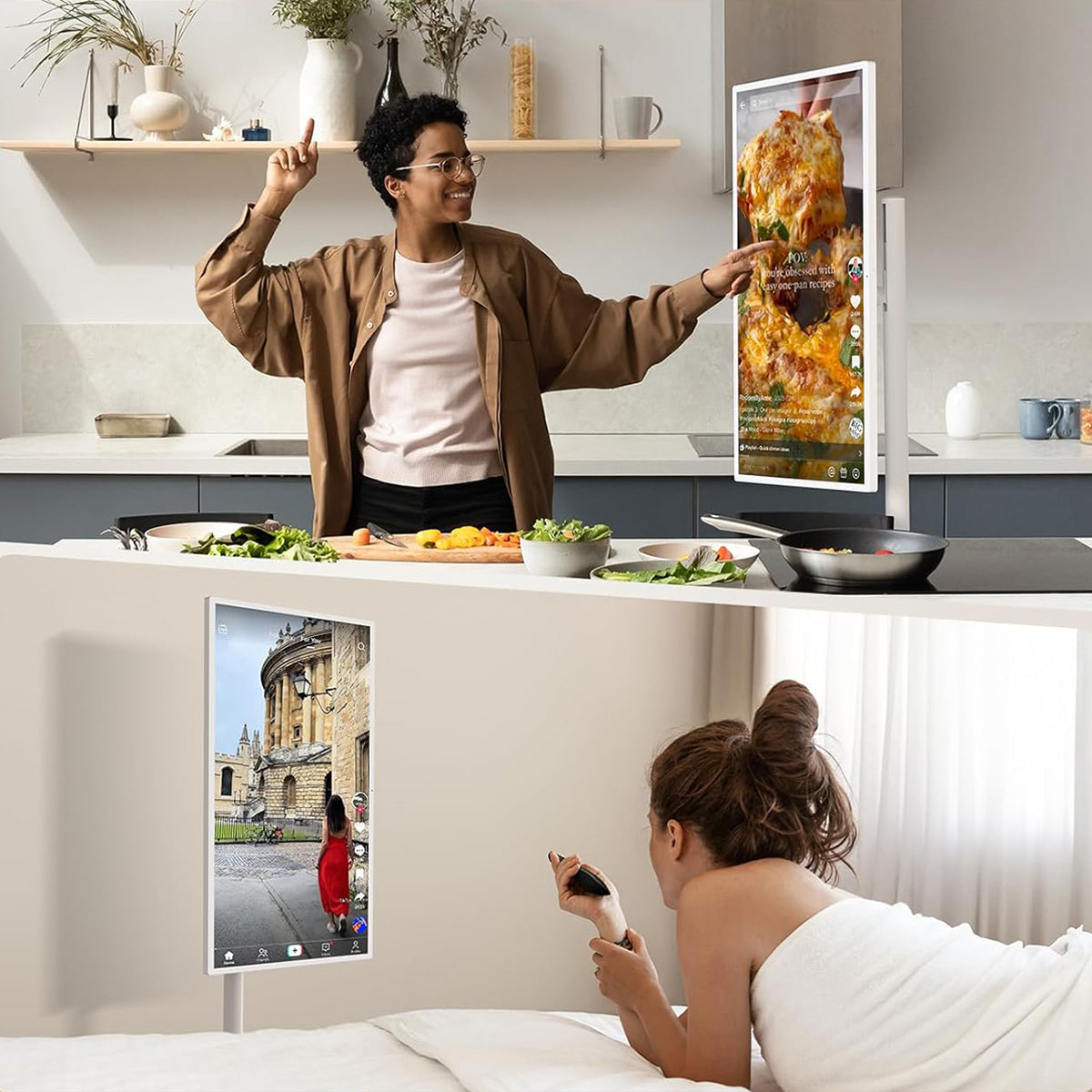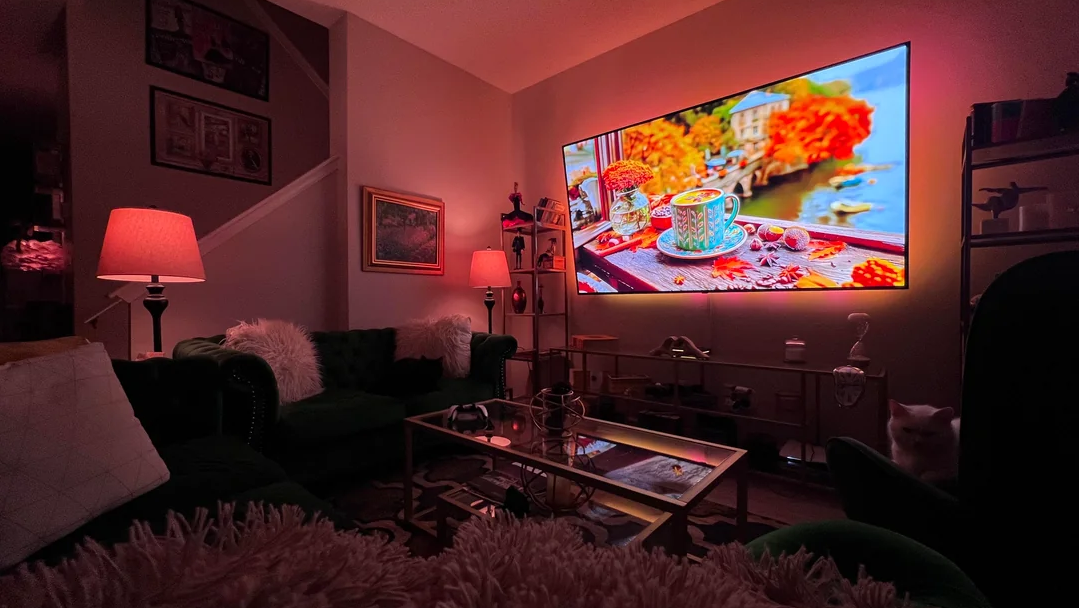Table of Contents
The world of television has drastically changed. From heavy, stationary screens, it has now transformed into portable, smart displays integrating AI-driven features and advanced technology. Today, Android empowers this transformation. Portable TVs are becoming smarter, more efficient, and highly interactive. Credits go to systems like Android TV, Android system intelligence, Android tablet, and the newer Android 13 OS. According to Medium, the system can recommend content that matches your viewing preferences, rather than having you browse for hours to watch your favorite shows.
Eager to know more? This article will spill the beans on how Android has shaped the evolution of TV systems, and why it leads the global smart TV industry. That’s not all, we will also discuss the ways it elevates your mobile entertainment experience, especially through the innovative GFF’s next-generation TV system.
The Evolution of TV Smart Systems
Televisions were never this interactive or had AI features to entertain you. Its evolution can be divided into different eras. These not only reflect the technological advancement, but also the shift in digital behavior and user expectations:

No OS Era (Before 1990)
Before 1990, TVs were simply hardware-driven devices with no proper operating system. You just received broadcast signals, could switch channels, and adjust basic brightness and volume settings. There was no concept of connections, digital interactions, or applications. It was a display, nothing more.
Embedded System Era (Early 2000s)
As digital technology grew, TVs began integrating those simple embedded systems. This one allowed for basic menus, had limited screen controls, and DVD playback. They neither offered any external application ecosystem nor were programmable. However, still marked the first step toward “smart” behavior, despite being nowhere near modern standards.
Smart TV 1.0 (2010)
In 2010, the first generation of smart televisions was launched. Brands such as Samsung, Google, and LG dominated the shift. Their televisions integrated operating systems that were capable of running applications, connecting to your home’s Wi-Fi, and streaming content.
Google TV: It attempted to blend live TV and streaming into a unified interface.
Samsung Smart TV: The brand introduced application stores and internet browsing.
LG webOS: LG webOS gave a clean and simplified content launcher.
Android TV: The Android version stepped into the market as a flexible, scalable platform for multiple brands.
Smart TV 1.0: It brought interactive features, but still had limitations. The processing was sluggish, with limited application support and inconsistent performance across devices.

Smart TV 2.0 (2014–Now)
The 2.0 era launched mature connected televisions. Today, you see your TV running complicated operating systems with app ecosystems, AI recommendations, multi-device integration, and fast processors. This one includes:
Android TV: It’s the most widely adopted one.
Google TV: Purchasing a Google TV gives you a more tailored, AI-forward Android TV.
Tizen: Tizen is Samsung’s refined OS with strong app support.
webOS: It’s LG’s modernized model. The smart TV has improved gesture navigation.
Fire TV: Fire TV is Amazon’s content-centric ecosystem built on Android.
When it comes to the developer ecosystem, scalability, and integration with Android System Intelligence, Android TV outshines other systems.
This evolution from simple hardware to connected models sets the stage for portable TVs and their dominance in the smart TV category.
The Rise of Android TV in the Industry
Android TV has become the most widely used and versatile platform in the global smart TV industry. The television’s open-source nature permits manufacturers to personalize the UI, quickly deploy software updates, and integrate unique hardware. This flexibility helps Android TV power millions of devices, both premium and budget-friendly segments.
Three major factors are responsible for its huge success:
-
Extensive App Ecosystem
Android TV provides access to thousands of apps through the Google Play Store. From YouTube and Netflix to gaming apps and productivity tools, you get to enjoy the same experience as you do on mobile devices. It will feel like watching on an Android tablet, but on a larger screen. -
AI-Driven Intelligence
Android System Intelligence’s introduction has changed how TVs understand your preferences. This built-in feature supports voice commands, tailored content recommendations, system optimization, and contextual suggestions. You must be wondering: what is Android System Intelligence? It’s the brain of the Android TV. Through this, the smart TV predicts your needs, enhances performance, and offers dynamic content discovery. -
Smooth Upgrade Path With Android Versions
With the arrival of Android 13 OS, Android TV has become more secure, stable, and responsive. The upgraded system introduced enhanced audio routing, improved multitasking, refined user experience, and better device-to-device communication. These modifications are more impactful on portable TVs, requiring optimized performance to balance power management and mobility.
Witnessing the pace of brands adopting Android TV, the platform continues to set the benchmark for consistency, user-centered innovation, and compatibility. As a result, consumers across the globe prefer investing in the Android TV system.
How Android Enhances the Portable TV Experience?
Portable TVs have garnered immense popularity. But the thing that truly takes their functionality to the next level is Android’s software ecosystem. Unlike mainstream TVs, portable ones benefit from touchscreen capability, mobility, and device integration. Android augments all of these advantages:
Offers Cross-Device Compatibility
Portable TVs running Android deliver seamless interaction with smartphones, your wearables, and smartphones. It offers cross-device compatibility. Here you can cast, share multiple screens, and sync universal apps. This helps users turn their TVs into an extended smart device, like an oversized Android Tablet.
Allows App-Level Flexibility
Android TV allows app-level flexibility. This means that portable TVs can access educational, entertainment, IoT, and productivity apps from the Google Play Store. The outcome? You get a versatile device that you can use at home, at outdoor events, in classrooms, or in offices.
Intelligent System Optimization
The Android System Intelligence powers portable TVs. The optimization allows the TV to adapt to brightness levels and sound profiles. Network usage and content recommendations based on real-time user behavior, making your viewing experience personalized and flawless, even on the go.
Performance Efficiency With Android 13 OS
When you pair a portable TV with Android 13 OS, mobile TVs benefit from efficient audio controls and advanced battery management. Optimized Bluetooth, efficient audio controls, and Wi-Fi performance. Such enhancements are necessary for devices operating off built-in batteries.
Easy to Use
Android has an interface similar to a regular mobile ecosystem. Therefore, users find it easy to use and comfortable navigating their portable TV system. The familiarity lessens the learning curve and gives an intuitive interaction model. So, casual and non-technical individuals will have fun.
Android is not only fueling portable TVs, it’s redefining the interaction style, turning them into smart, mobile entertainment hubs.
Hardware & Software Integration
The more the smart portable TV’s hardware and software complement one another, the better its performance. The system is the best in this area as it efficiently adapts to different hardware configurations. Delivering smooth operation even in a mobile environment:
Processor
Portable TVs are typically designed with high-performing processors to handle multitasking, streaming, and touch interactions. Android’s architecture promises your selected applications load quickly, without disturbing the system.
Built-in Battery
The built-in battery is vital for portable TV experiences. Android supports intelligent power management, especially with enhancements in Android 13 OS. It extends battery life during casting, streaming, or other interactive usage.
Screen Size & Resolution
The portable TV’s screen size generally ranges between 24 to 32 inches. Android scales UI elements across these displays. Resulting in crisp visuals, smooth animations, and customizable DPI settings. Whether it’s full HD or HD, Android customizes content for comfort and clarity.
Touchscreen & Peripherals
Several portable TVs offer touchscreen interactions like an Android tablet. You get to use Android’s touch support, Bluetooth device pairing, and expandable storage options. In this way, a highly flexible ecosystem is created, enhancing the overall TV system’s usability.
When these elements come together, they produce a seamless hardware-software synergy that boosts reliability and functionality.
GFF Smart Portable TV on Wheels
A Next-Generation Portable TV Solution
With the GFF S1 32-inch Smart Touch Screen Portable TV on Wheels, GFF introduces a powerful leap in portable entertainment. The television is designed to provide seamless mobility, multi-environment use, and easy handling. Giving you the perfect blend of the latest hardware with an advanced Android-driven software experience.

Android-Powered Smart Software
This system runs on a tailored version of Android TV, which the Android System Intelligence further enhances. This package opens the ground for instant app loading, intelligent recommendations, fluid touch interactions, and an extremely personalized user interface. Plus, the clean and minimal system layout makes it super user-friendly.
It Can Be Used In Multiple Situations
You can use the GFF Android TV anywhere in the house. Be it home entertainment, classroom teaching, exercise sessions, office meetings, or outdoor purposes, the portable wheeled technology can be moved everywhere. The built-in battery allows you to watch for long sessions without plugging into a power outlet. At the same time, premium-quality speakers and an HD display deliver immersive viewing.
Reimagine the Modern TV System
GFF S1 has reimagined the modern TV system by combining Android’s flexible TV system with GFF’s strong hardware design. It shows that even portable TVs can bring smart, mobile, and effortless entertainment in every environment.
Conclusion
GFF SI is taking the Android TV system to the next level. You can use it both indoors and outdoors without a power outlet. Therefore, don’t wait and buy one.
About the Author:
Nana Xu is a tech writer and product enthusiast who focuses on smart home devices and innovative display technologies. With a passion for user-friendly design and new trends in consumer electronics, she helps readers make smarter choices for modern living.





